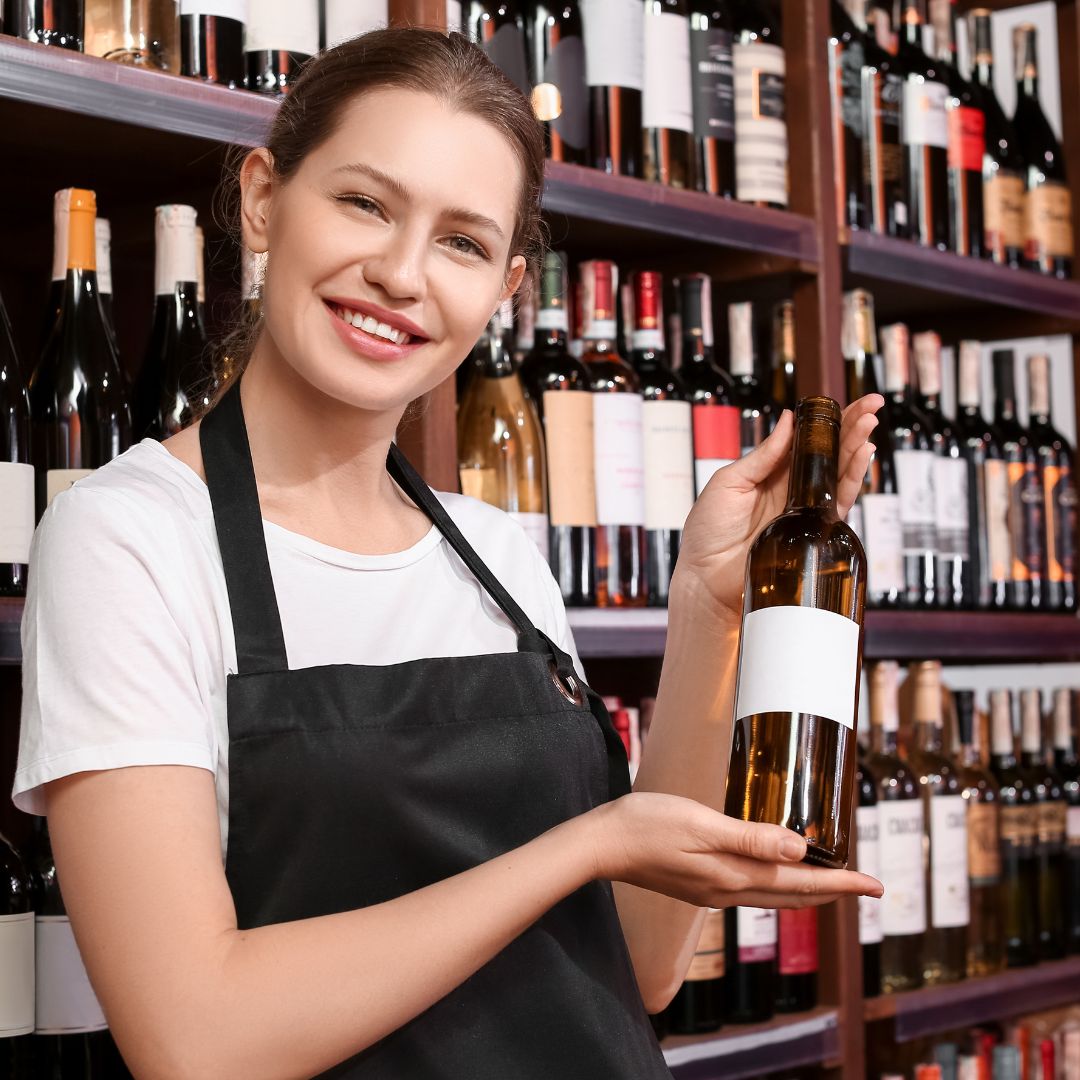How to Develop a Retail Channel Strategy for Your Adult Beverage Brand 3/18/2024
 If you’ve created a high-quality wine or spirits product with an appealing brand proposition, the next step is to determine your route-to-market strategy. This includes the markets you want to sell in, distribution partners you will work with, retail channels you will target, and the budget you will allocate to support the brand growth for the year. This article will focus on the retail channel strategy of your route-to-market plan.
If you’ve created a high-quality wine or spirits product with an appealing brand proposition, the next step is to determine your route-to-market strategy. This includes the markets you want to sell in, distribution partners you will work with, retail channels you will target, and the budget you will allocate to support the brand growth for the year. This article will focus on the retail channel strategy of your route-to-market plan.
The first stage of building a retail channel strategy is to understand the retail framework in the U.S. Each state in the U.S. has its own beverage alcohol laws, which can vary greatly. Tax structures are often unique from state to state as well, which means the same product will have a different price point in different states.
Defining Retail Channels
While the number and types of retail accounts carrying alcohol is rapidly increasing, the terminology defining those retail accounts is consistent across all markets. In the U.S. retail outlets are split into two primary groups: on-premise and off-premise.
On-Premise
The on-premise retail designation, sometimes called the on-trade, consists of a variety of venue categories, but what they all have in common is that the product sold is meant to be consumed on the premises at which it is sold. This category of retailers includes such locations as bars, restaurants, sporting venues, concert arenas, and airports.
Off-Premise
The off-premise channel, sometimes call the off-trade, is also divided into several categories, including independent retailers and chain retailers, but what they all have in common is that the product sold at these locations is meant to be consumed at a different location than where the sale took place. Some U.S. markets skew toward locally owned and operated independent retailers, like New York City, while others are dominated by chain retail accounts that operate in multiple locations.
E-Commerce
While technically still under the off-premise consumption definition, e-commerce as a retail channel is increasingly taking a greater portion of sales shares. E-commerce refers to any type of sale that takes place online. For spirits, app-based delivery and white-label websites are the most common avenue for e-commerce, and orders must still ultimately be fulfilled by retailers in order to remain compliant with the three-tier system.
Picking the Right Markets and Accounts
Since every individual market is vastly different in terms of buyers, budgets, and structure, beverage alcohol suppliers must craft their retail strategy to fit the markets they are entering. For instance, Las Vegas, New York City, and Miami are all major cities, but offer vastly different retail landscapes. Las Vegas is dominated by major hotel and casino properties, New York is home to some of the most iconic trendsetting bars in the world, and Miami is a major Latin American hub with demographics unique from anywhere else in the country.
Before launching a brand into any of these markets, a supplier should understand what people are ordering, as well as how, where, and when they are making these orders. Once you’ve gotten a feel for the unique characteristics of the market(s) you want to enter, it’s time to establish a national, regional, or local retail account strategy, depending on the size and funding behind your brand.
Until quite recently, it was accepted wisdom that alcohol brands are “built on-premise and sold off-premise”, meaning bars and restaurants were often the first places consumers were exposed to a new brand. As a result, the bulk of sales and marketing resources were spent getting on the back bar, menu, or in the hands of influential on-premise bartenders.
But as channel options proliferated, and social media became commonplace, there have been a growing number of successful brands built by prioritizing sales off-premise or via e-commerce rather than on-premise.
Events and festivals, too, can present unique opportunities for brands to engage with new consumers. Though smaller brands cannot typically afford high sponsorship fees for events, they can still enter venues and events as a concession item, especially if they leverage a unique value proposition as a “turn-key” item.
“For LIQs, as long as we break even, we consider [events] a win,” revealed Michael Glickman, Founder of LIQs. “We’ve done well over 100 music festivals. Everything from EDC Vegas to Life in Color, events that cost brands typically minimum $50,000 to $250,000 to participate. We’ve never spent more than $5,000 and we’ve always sold hundreds of cases.”
Getting a New Retail Account
Once a general market and channel plan is put in place, the next hurdle is to get your brand on the shelf. There are a handful of ways to go about this including external sales agency support, and distributor incentive programs, but for this article we will focus on the tasks that can be done in-house.
The first step is pitching your product to the buyer at your target retail account. Whether off-premise or on-premise, accounts typically prefer the first meeting to be set up by appointment, rather than showing up unannounced.
Brett Pontoni, Specialty Spirits Buyer at Binny’s Beverage Depot, recommends conducting research both on and off-premise for the market, even if a brand is only pitching to the off-premise. This helps brands better understand the trends shelf sets and selling climate in the area they are entering. From there, Pontoni suggests that brands should be zeroing-in on learning more about the specific retailer they are pitching.
“Go into at least two or three of my stores and look at the shelf,” explained Pontoni. “If you’re going to pitch me a gin, look at three gin sections, look at how I have the gins arranged, look at the price points on the gins, look at what gin is and is not on sale, look at what shelf talkers and neck hangers we have up, and look at what’s on display. All that information is going to be valuable to tell you what we like.”
ECRM is another way in which brands will have the opportunity to pitch directly to on- and off-premise buyers. During the company's On & Off Premise Adult Beverage Session, brands are matched with buyers in highly-curated in-person face-to-face meetings. Binny's has actually participated in these sessions as well.
When pitching to on-premise accounts, bar owners and managers appreciate when you can make a case for how your product fits into the bigger picture of their bar program. Your sales representative should get a feel for the core demographics, the type of drinks that sell best, and overall mission of the on-premise account and be able to explain how their brand adds additional value to this mission. The ability to communicate why your product is differentiated from the rest of their inventory and what the account stands to gain by taking it on is crucial to winning over an on-premise buyer.
Increasing Sales at Your Retail Accounts
Once a product has made it on to a retailer shelf, the best way to ensure future sales is to provide account support in the form of product education for staff, reliable stock inventory or marketing materials. The modern retail account is often looking for their beverage alcohol supplier partner to act as a trusted consultant rather than a product pusher.
Jeannine Babcock from Cordially Yours Wine & Spirits in New York suggests, “introducing a new product and making that product available in 50mls and not having ‘out-of-stock’ issues out of the gate makes for a happy retailer and even more happy customers.”
A brand’s product positioning and brand narrative is the aspect of sales that suppliers have the most control over. Crafting a well-structured and engaging brand narrative will help retail salespeople to differentiate their products from competitors and increase sales.
As beverage consultant Robin Robinson explained, the most successful brand narratives have a beginning, middle, and end. The beginning should include a setup that introduces the product or brand and gets the listener’s attention. The middle should include a challenge that the brand creator or brand faced and the end should include a solution that shows how the product or brand solved the challenge. The challenge and solution should be specific to the brand, highlighting what sets it apart from competitors.
Once a brand has sold to a retailer, they must also ensure to continue nurturing that relationship. Brands can ensure they are assisting retailers by providing them with options where possible and, of course, making sure they can purchase products when there is a need.
Scaling and the Importance of Velocity
One way to make sure a product keeps moving is to ensure a strong ‘rate of sale,’ also known as velocity, according to industry consultant Chris Maffeo. “At the beginning, it’s fine to sell one bottle to five bars because you want to test the waters,” he says. “At the end, you need to double down on those that are buying a case because that’s where the rotation is.”
Selling to a smaller number of bars that are more likely to purchase multiple cases of a product can be more effective than selling to as many bars as possible. Brands should aim to build long-term relationships with bars that have a legitimate interest in their product and focus on understanding why these bars are more likely to buy their product.
From there, suppliers can build out a stronger demographic profile for their brands. This will allow them to focus on the retailers that are more likely to purchase their product repeatedly, rather than continuing to test the waters with many bars at once. A good rule of thumb is to prioritize the value gaining access to the right retail accounts over the sheer volume of accounts secured.


Emily Pennington is Sr. Manager, Content & Marketing at Park Street, a provider of productivity-enhancing and cost-saving back-office solutions to alcoholic beverage brands around the world. She oversees Park Street University, an industry education platform enlisting alcoholic beverage members to share their experiences, insights, and achievements through seminar series, informational videos, podcast interviews, and news announcements.